We returned to Paris early Monday and booked an all-day tour to the Loire Valley. While there is always more to do in Paris, we wanted to venture out of the city and see things on our bucket list. Eric found this tour on Trip Advisor which picks you up at your hotel ( or apartment 🙂 ), stops at three different castles, included a lunch and restricts their group size to eight or less. Ultimately, our group was a total of four, plus the tour guide. The other couple was from CA and had been visiting their daughter who was completing an internship at The Hague.
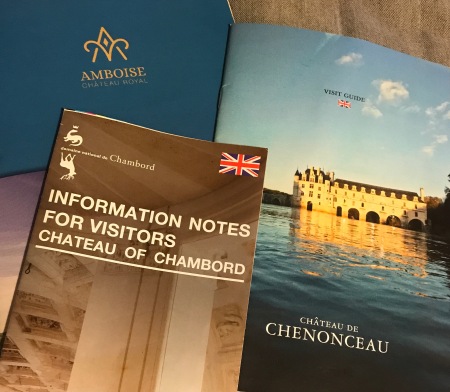
Chateau Amboise
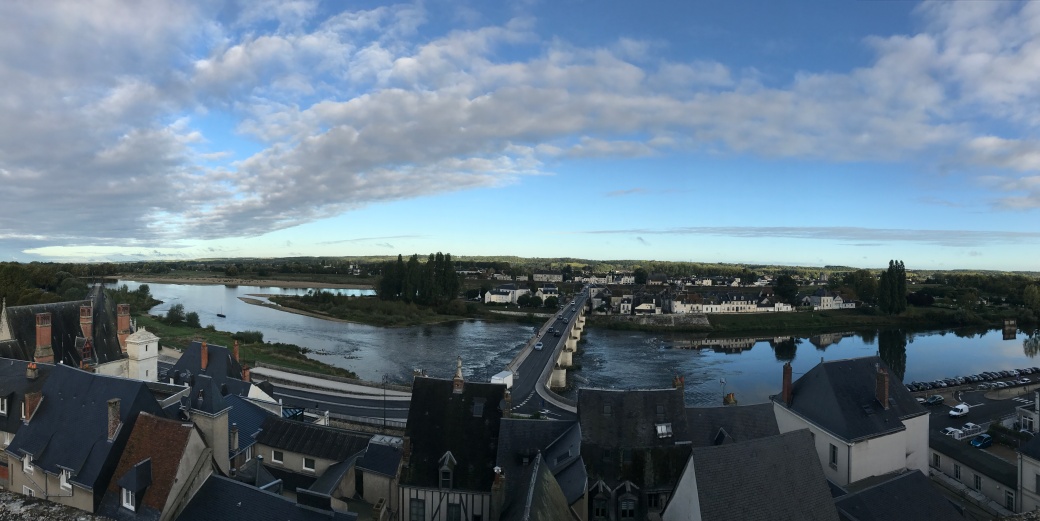
Occupied since Neolithic times, Amboise became the main settlement of the Tourones, a Celtic people. In the 4th century AD, the first trenches of the château were dug to defend the buildings and its occupants. During the Renaissance, this chateau was a place to live and stay for the royalty. It was the stage for numerous political events in the kingdom: births, christenings, aristocratic marriages, conspiracies and peace treaties. This formidable fortress ensured the royal family’s safety.
The first thing we ran into was the St. Hubert Chapel, the patron saint of hunters. You can just barely see some antlers in my photo – but they are there.
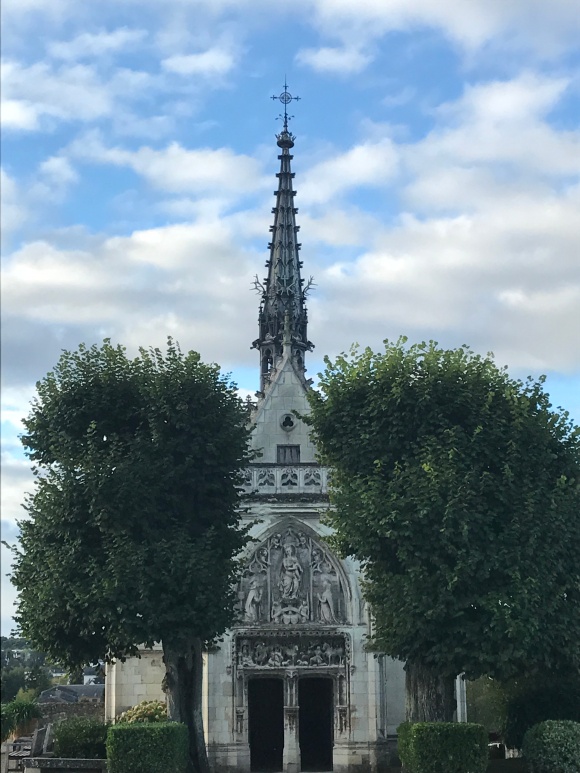
It was constructed in 1493 and designed for the sovereigns’ private use.
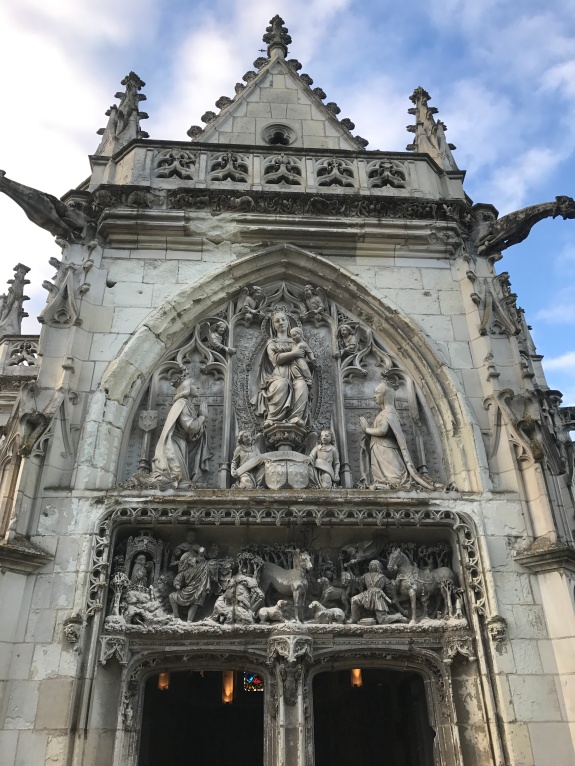
This chapel is famous as the resting place of Leonardo da Vinci, who died in Amboise on May 2, 1519. He arrived in Amboise in 1516, aged 64 and King Francois granted him the privilege of being buried here. He was already famous by this time and became the King’s “first painter, engineer and architect” and gave him an annual pension of 700 crowns.
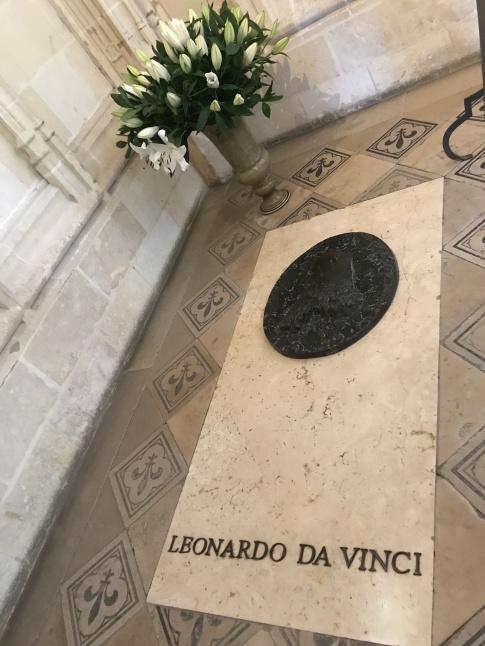
And here you have the main building.
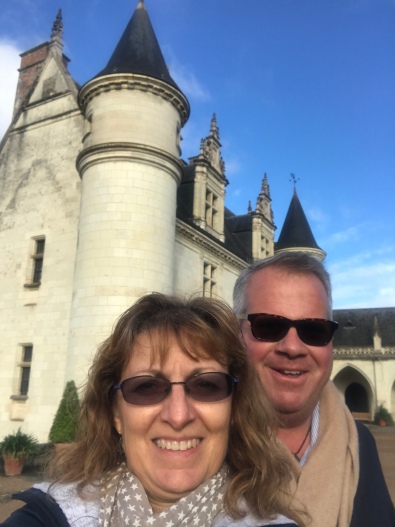
One of the first rooms you enter is the Royal Lodge Entrance, the Guard’s room. The King’s bodyguard were made up of Scottish and Swiss companies and later French Musketeers.
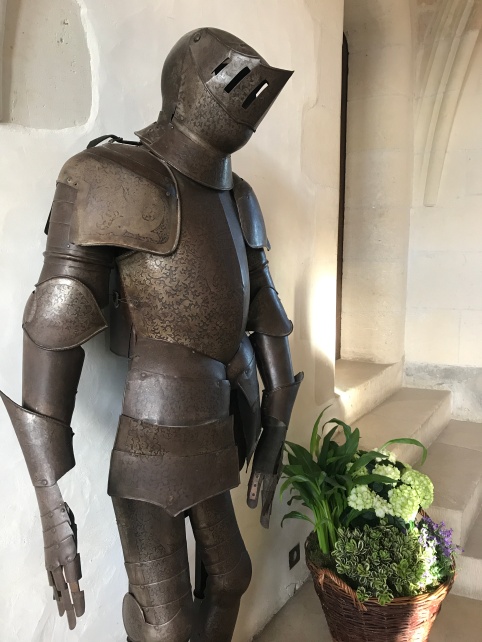
This was used as the King’s throne when in residence at Amboise.
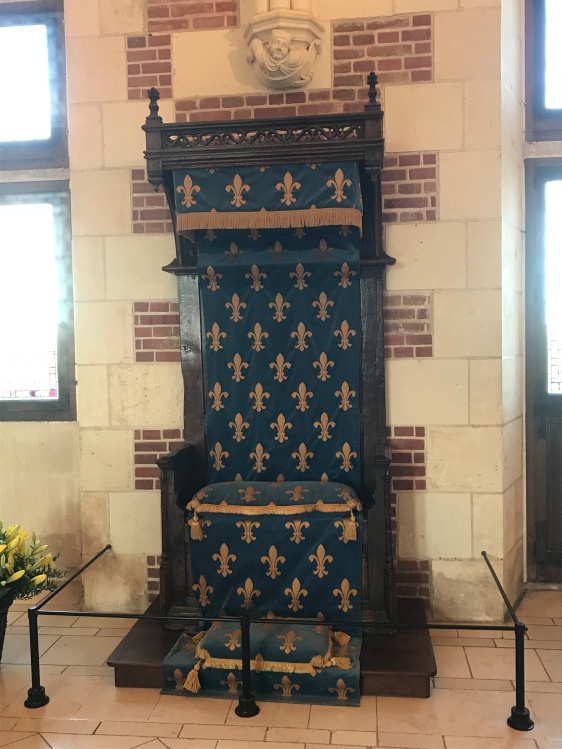
We pretty much had the castle and grounds to ourselves since we arrived when they opened at 9am.
We found these empty frames placed around the grounds and they made an excellent photo.
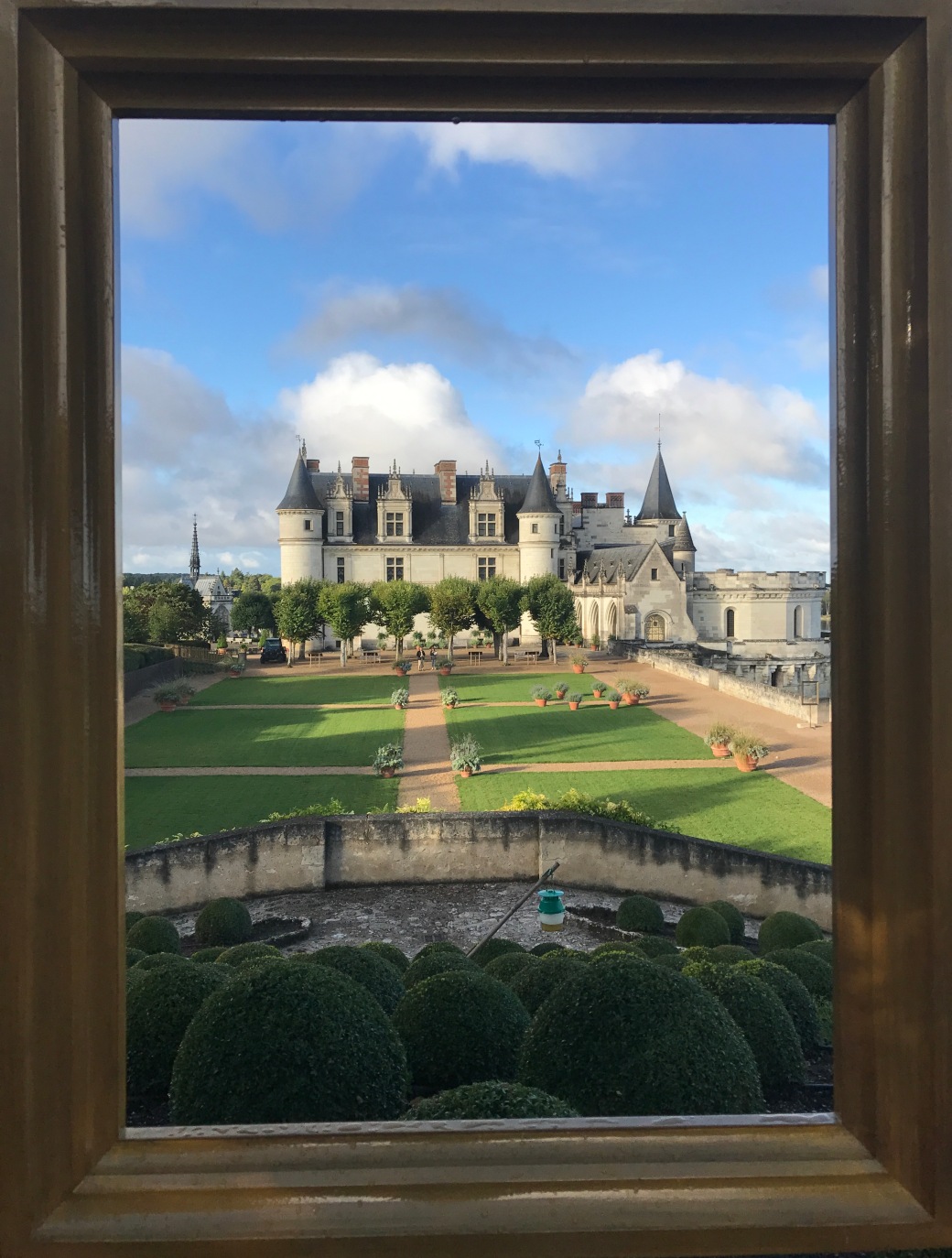
Chateau de Chenonceau
The estate of Chenonceau was first mentioned in the 11th century with the current château being built in 1514 on the foundations of an old mill and was later extended to span the river. This photo shows the only part of the building left from Medieval times, the tower or keep, which is separate from the main chateau.

Other than Versailles, it is the most visited château in France. It is also called the Ladies’ Chateau as through the ages, a series of at least 5 ladies had the most impact on its construction and upkeep, the first being King Henry II’s mistress, Diane de Poiters.
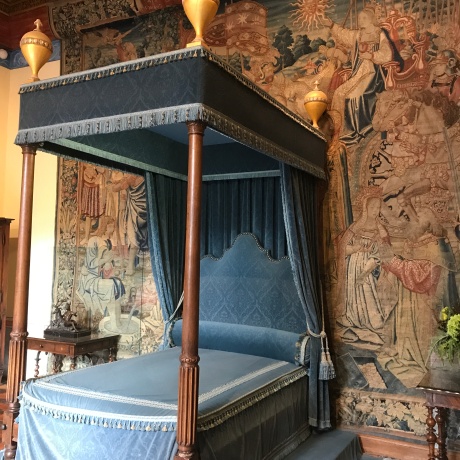
When the Queen became a widow, she forced the mistress out and made the Chateau her permanent residence. When she became Regent, she governed France from this Chateau. The 16th century tapestry behind Eric is exceptional for its (original) green color – which has now turned mostly blue – and inspired by the discovery of the Americas. Things depicted in the tapestry are plants and animals unknown in Europe until 1492: silver pheasants, pineapples orchids and pomegranates.

So while the mistress had a bridge built over the River Cher, the second lady in residence, Catherine de Medici had a gallery built in honor of her son, King Henry III.
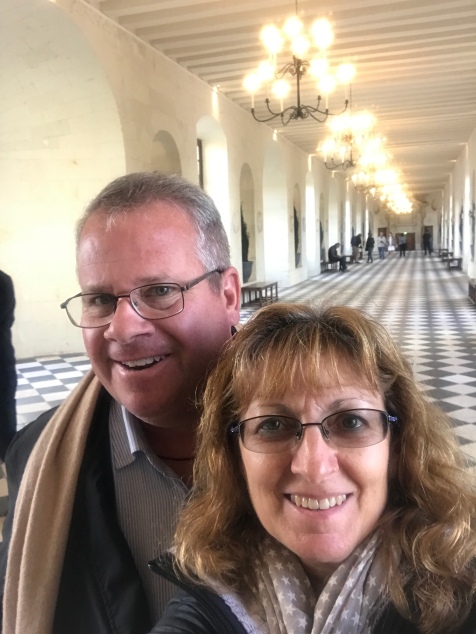
In the 1900s it was no longer owned by royalty, the current owner paid for the château to become a hospital during WWI. During WWII, the River Cher corresponded to the line of demarcation so the entrance was in the occupied zone. The door at the far end of the photo gave access to the left bank and made it possible for the French Resistance to pass large numbers of people into the free zone.
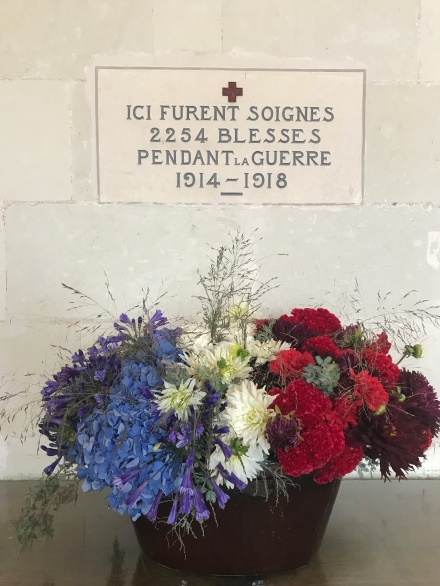 Can’t visit a castle without walking through the kitchens, which were below the main building.
Can’t visit a castle without walking through the kitchens, which were below the main building.
While in every room there are portraits of notable aristocrats, this one was exceptional, since only four pieces of wood were used for the frame and it had very intricate carvings. By the way, the figure in the portrait was Louis XIV.
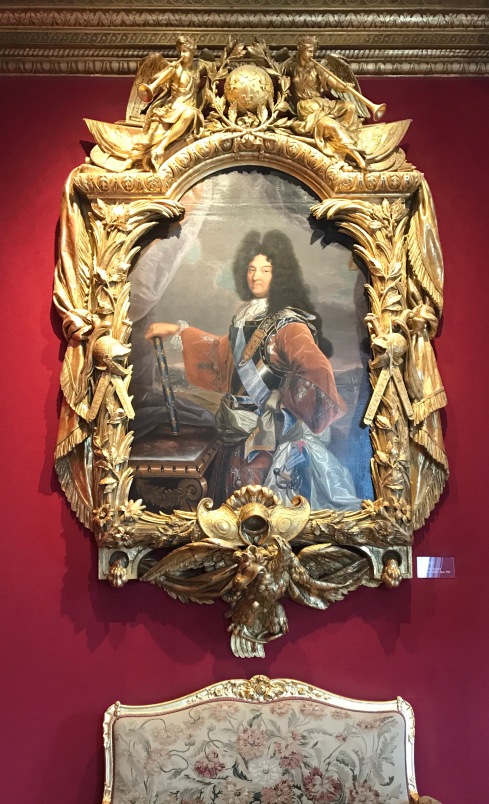
This bedroom was given the name of ‘The Five Queens” since Catherine de Medici’s two daughters and three daughters-in-law had been here at one time or another.
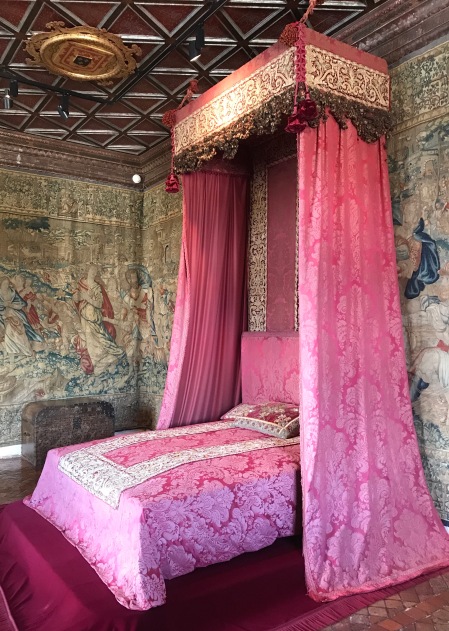
So there was way more to the château and we had to run through part of it since we had limited time on the tour to explore and the gardens were a major draw for us. Prior to arriving at each chateau, the tour guide gave us some history of its occupants and building, got our tickets and let us explore on our own. Of course he always gave us a deadline to meet back at the minivan.
Everyone has to take photos of the span across the river and we were no exception.
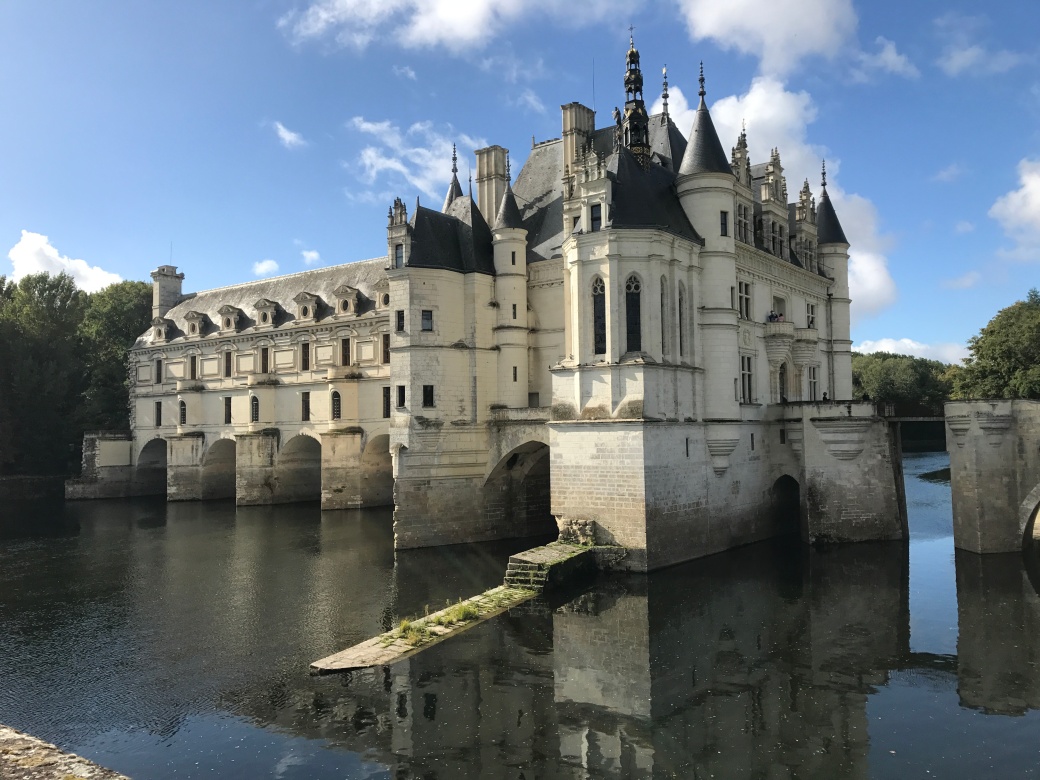
The garden most easily seen was created by the first lady in residence (Diane the mistress) and the current layout of this flowerbed has remained unchanged since its creation, including the water feature.
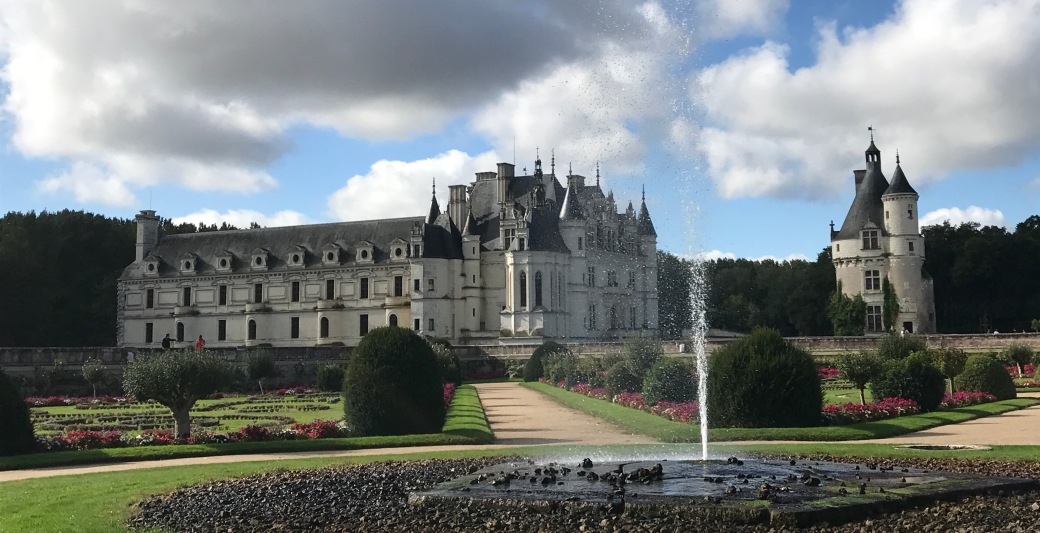
On the other side of the castle was the garden created by Queen Catherine and is considered more ‘intimate’.
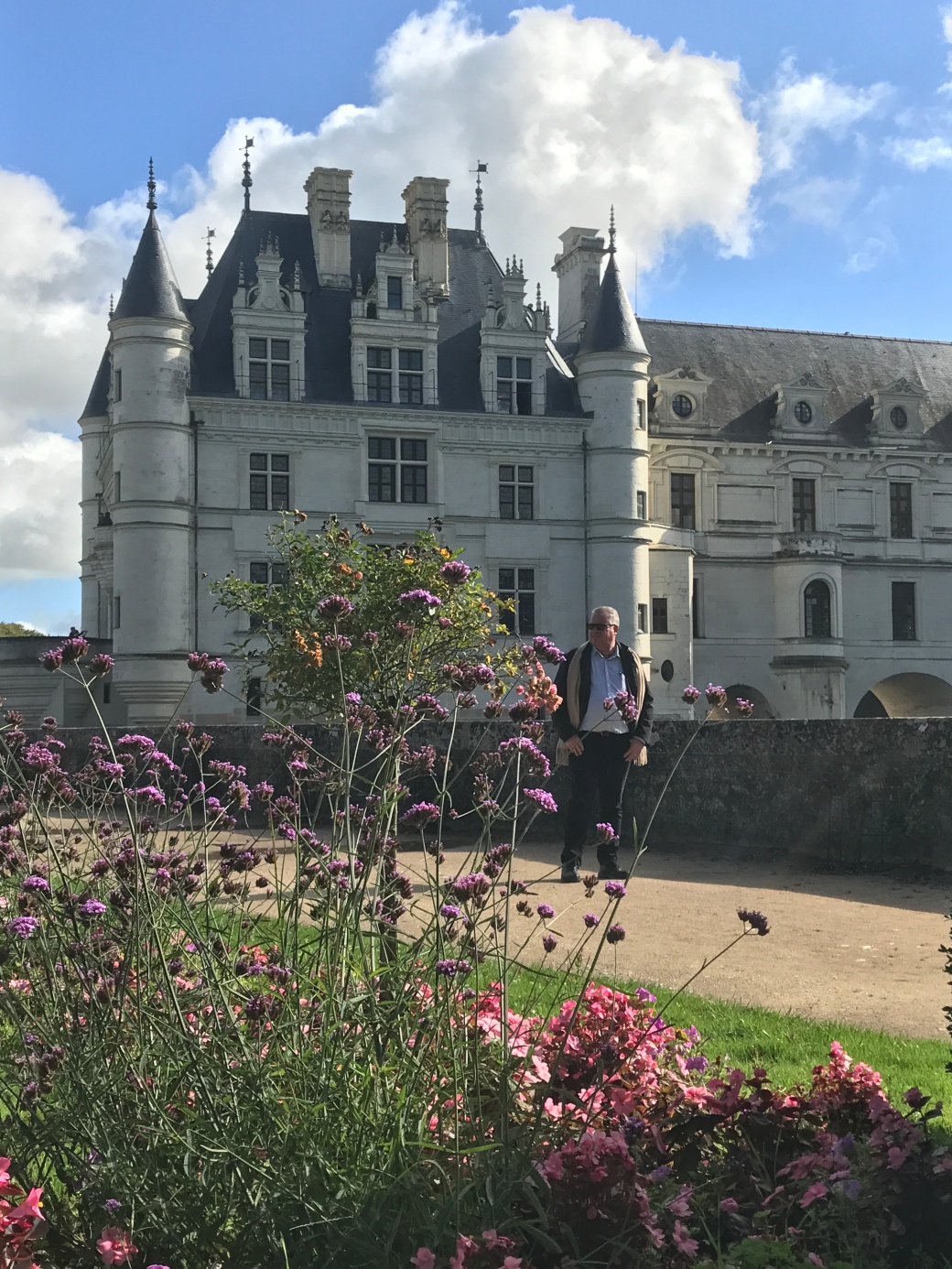
I had to take another photo of the river flowing through the château, from the ‘back’ side.
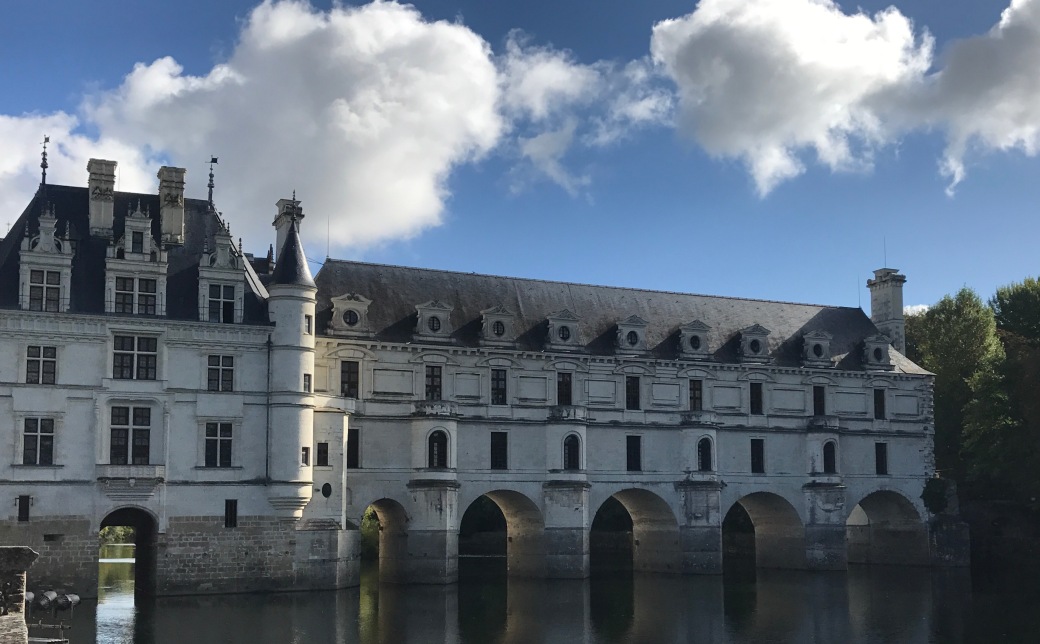
As we were leaving to meet our tour guide, I got a few last photos. There is a ‘forest’ with walking paths for some to breathe in more of the outdoors. Obviously, some guests have used this green space for other things.
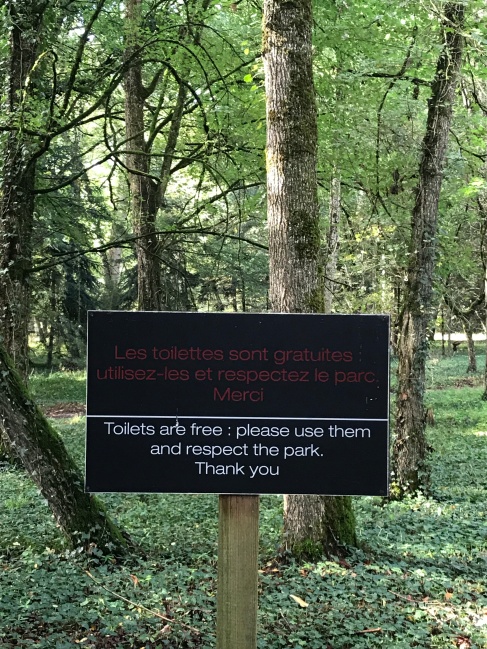 There was a 16th century farm and that is where two florists work all year around. There are absolutely awesome floral arrangements in every room inside the château.
There was a 16th century farm and that is where two florists work all year around. There are absolutely awesome floral arrangements in every room inside the château.

This runs into the vegetable garden. We didn’t really have any time to explore this area, but got one photo before meeting the group.
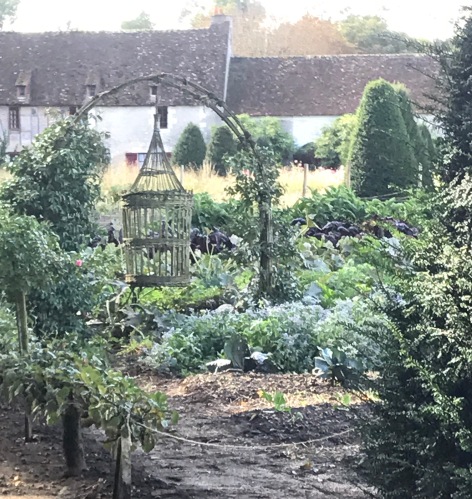
We went into the town and ate at a small local restaurant as part of the tour.
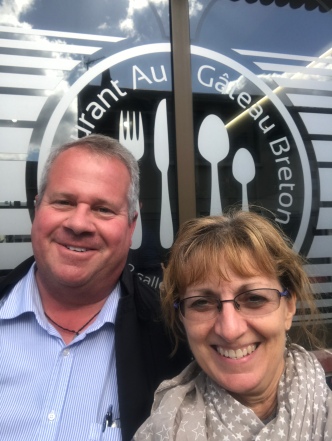
The first plate was the ‘vegetable’ plate and the cream-colored veggie was celeric root with a tangy mayo-based dressing – delicious! Eric got the seafood option while I ordered the guinea hen plate.
Dessert was apple tart with vanilla ice cream and chocolate cake w/ a cream based sauce.
Chateau of Chambord
Ever since its creation (early 1500s) by King Francois 1 at the dawn of the French Renaissance, Chambord has been a source of never-ending surprises for visitors. The distinctive architecture of the moment and the unity of the domain since the 17th century has always been respected by successive political regimes. It was Louis XIV who completed Chambord while respecting the spirit the original architecture and nothing has been added since.
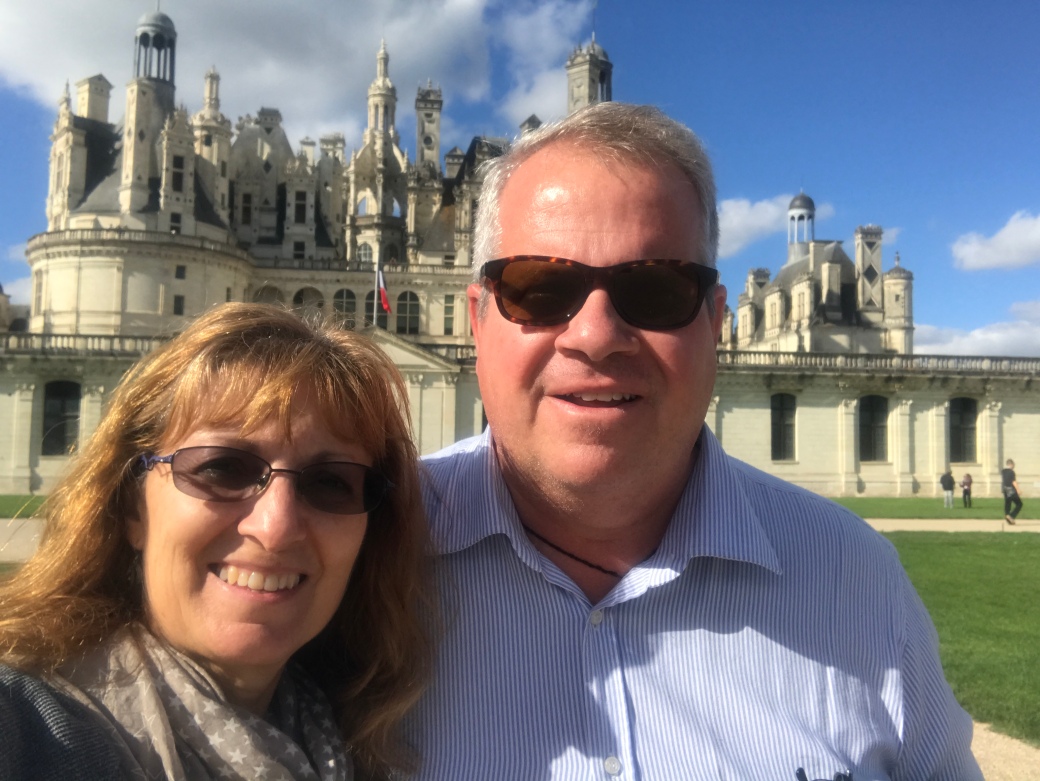
The first floor of the château presents numerous furnished apartments. The blue was the Queen’s bedroom.
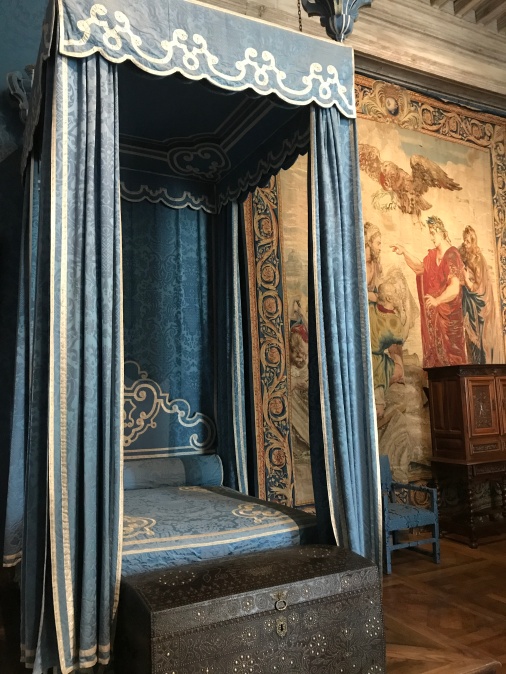
While this room was considered one of the Guest quarters. These rooms were furnished as could be seen in the 16th to 18th century.
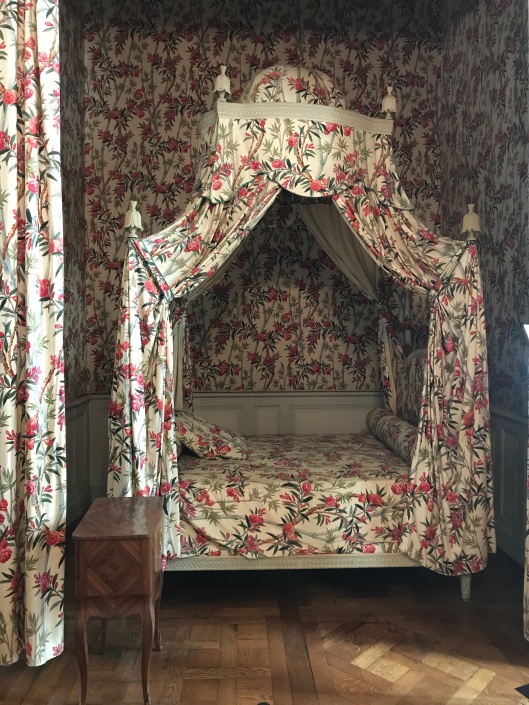
We eventually made it to the terraces which offered a panoramic view of the park and the surrounding gardens. This also immerses a person in the abounding display of chimney stacks, dormer windows and stairway turrets showcasing the elevated rooftops of the chteau.
In the center of it all, the lantern tower rises majestically skyward, topped with the royal fleur-de-lis.

The gardens were impressive and expansive.
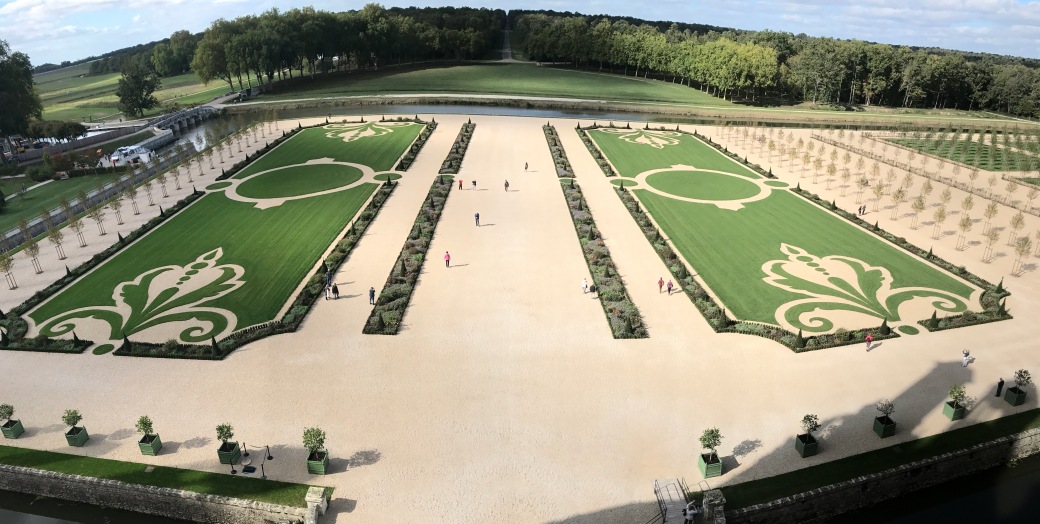

Everyone decided that while this château was probably the most impressive, you just couldn’t wrap your arms around it. We only had 1 1/2 hours to explore and you could spend most of the day if you wanted to see and absorb everything.
My favorite for the day was Chateau de Chenonceu.











Great history lesson. I particularly liked the tapestry of American flora and fauna. It always makes me think of how boring European food must have been prior to 1492.
LikeLike
Yes, I realized as I was writing there was more than normal history stuff, but I didn’t want to forget it, so…………………it got included in the blog.
LikeLike
It’s a pity you don’t have a donate button! I’d certainly donate to this fantastic blog!
I guess for now i’ll settle for book-marking and adding your RSS feed to my
Google account. I look forward to new updates and will share
this blog with my Facebook group. Chat soon!
LikeLike